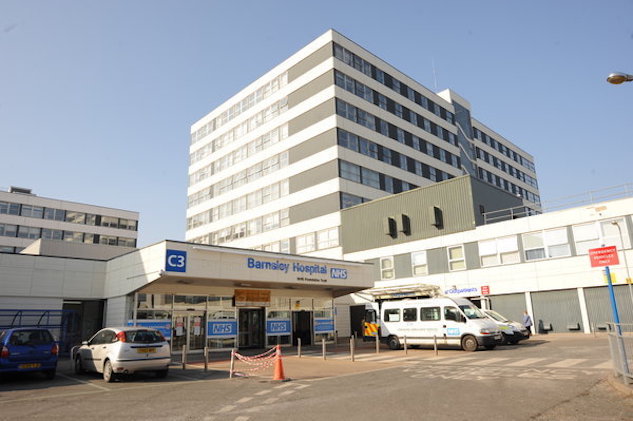HOSPITAL bosses have blamed a surge in Covid-19 and flu cases as reasons for missing an NHS-set target of seeing A and E patients within four hours - after statistics revealed less than two-thirds of Barnsley people are seen within the period.
An annual report, which relates to the 2022/23 financial year, praised under-pressure staff for continuing to deliver services despite a continued strain on resources.
The NHS target - which aims for 95 per cent of arrivals to A and E being seen within four hours of entry - was hugely missed in Barnsley, with just 61.8 per cent being achieved.
The report said: “We are proud of our colleagues who have continued to provide care to our local population despite an incredibly challenging year.
“The Covid-19 pandemic continued to impact on operational delivery with infection numbers rising periodically, requiring colleagues to respond to changes in infection, prevention and control and revised testing guidance.
“This winter also saw a surge in influenza and a rise in childhood strep A infections, resulting in unprecedented demand for urgent and emergency care with extensive ambulance delays reported across the country.
“The four-hour emergency access standard was not delivered in 2022/23 and the trust achieved 61.8 per cent against a constitutional standard of 95 per cent.
“The number of attendances returned to levels seen prior to 2019/20 alongside repeated surges in Covid-19, winter influenza outbreaks last December and January and paediatric strep A in October and November.
“The department continued to test all admissions to hospital for Covid-19 to support appropriate placement and reduce cross infection and testing for influenza was included between December and February.”
A total of 101,875 attended A and E in the year to March 2023 - a slight reduction on the previous year’s 102,885.
The figures also showed youngsters aged under 19 made 24,345 visits, while adults visited the department 77,530 times.
Siva Anandaciva, chief analyst at the health think-tank The King’s Fund, said A and E departments have had a busy summer and are now facing a ‘punishing winter’.
“The current A and E standard was introduced in 2010 and states that 95 per cent of patients arriving at a department should be admitted to hospital, transferred to a more appropriate care setting, or discharged home within four hours,” he added.
“The number of attendances at A and E fell during 2020 and 2021 as the public were advised to say away from hospitals while the Covid-19 pandemic escalated, but has since returned to pre-pandemic levels.
“An increasing number of people are waiting longer to be admitted onto hospital wards from A and E, with the number of people waiting more than four hours for an admission - often referred to as ‘trolley waits’ or ‘corridor waits’ - increasing.
“Over the past 12 months the number of people waiting more than 12 hours following a decision to admit has increased rapidly, and what was once a rare occurrence is now much more common, with 136,131 people waiting more than 12 hours to be admitted to a ward from A and E the third quarter of 2022/23.
“The four-hour standard is one of the most high-profile indicators of NHS performance, with declining performance seen as a clear indication of the pressures the health and care system is under.”




























